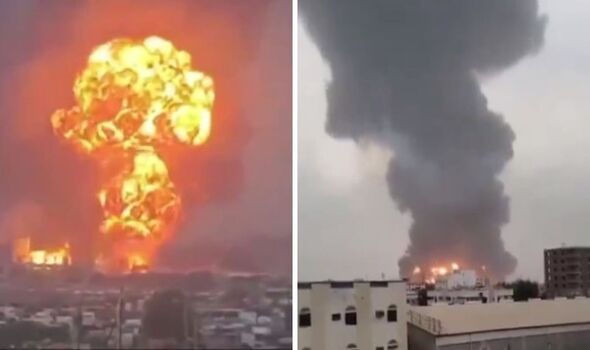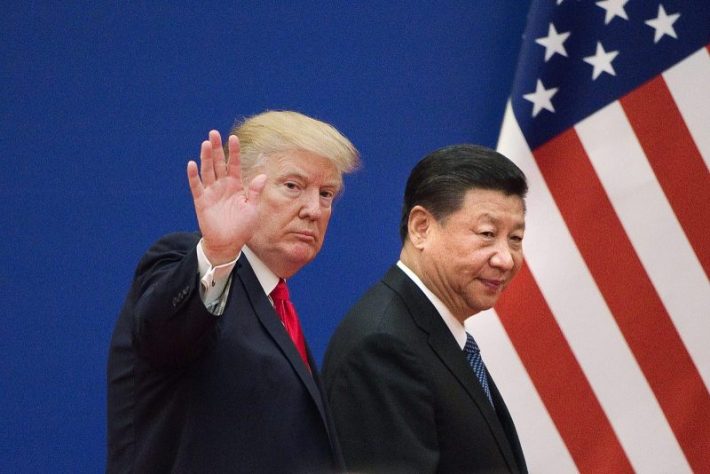
The Middle East has long been a hotbed of geopolitical tensions, and few conflicts have captured as much global attention as the ongoing conflict between Israel and Gaza. A significant development is that Israel has agreed to a US proposal for a temporary ceasefire in Gaza, according to an official statement from Prime Minister Benjamin Netanyahu’s office. The international community is increasing pressure on Gaza to end the fighting and address the dire humanitarian situation there. While Israel’s decision is a positive step, much depends on whether Hamas reciprocates and what happens after the ceasefire expires.
All the points in this post
Understanding the Context
To fully appreciate the significance of this announcement, it is essential to understand the historical context of the Israel-Gaza conflict. For decades, both sides have been locked in a bitter struggle over land, sovereignty, and security. The dispute dates back to the creation of the state of Israel in 1948 and the subsequent war that displaced thousands of Palestinians. Over time, control of Gaza shifted to Hamas, a militant group designated a terrorist organization by several countries, including the United States.
In recent months, violence has escalated dramatically, with rocket attacks from Gaza targeting Israeli cities and retaliatory airstrikes on densely populated areas causing widespread destruction. Civilians on both sides have borne the brunt of this cycle of retaliation, prompting calls for world leaders to intervene. Enter the United States, a key Israeli ally — which has come forward with a proposal aimed at restoring peace, if only temporarily.
The Biden administration’s involvement underscores the urgency of the situation. The humanitarian cost mounts and the risk of regional instability increases with each passing day of the conflict. By brokering a temporary ceasefire, the United States hopes to create space for dialogue and potentially pave the way for a more sustainable solution.
Details of the Ceasefire Agreement
So, what exactly is the U.S.-proposed ceasefire? According to reports, the plan focuses on a temporary cessation of military operations for a period of time. This would allow humanitarian agencies to deliver essential supplies to Gaza and give diplomats a chance to discuss additional steps. For Israel, agreeing to the proposal was not unconditional.
Netanyahu’s office has insisted that any ceasefire must include assurances against Hamas retaliation. Israel’s main concern is to prevent Hamas from using the ceasefire window to rebuild its arsenal or strengthen its position. To mitigate this risk, the agreement reportedly includes provisions for a monitoring mechanism, possibly including third-party observers. In addition, there are indications that Israel may link future extensions of the ceasefire to tangible progress in securing the release of hostages held by Hamas.
While the specifics of the agreement remain somewhat unclear, one thing is clear: it is not a permanent solution but rather a stopgap measure designed to buy time. Critics argue that such temporary arrangements often fail to address the underlying causes of the conflict, leaving the door open to renewed violence after the ceasefire ends. However, supporters see it as a necessary first step towards resolving the stalemate at hand.

Hamas’s Position and Response
For any ceasefire to be successful, Hamas’s cooperation is essential. As the de facto ruling authority in Gaza, Hamas wields considerable influence over the fate of the region. However, historically, the group has approached ceasefires cautiously, viewing them as strategic pauses rather than opportunities for genuine reconciliation.
So far, Hamas has not officially responded to the latest proposal. The delay has raised questions about its willingness to abide by the terms set by external powers such as the United States and Israel. According to some analysts, hardline factions within Hamas may oppose concessions that they believe would weaken their position, which could further complicate matters. Another factor influencing Hamas’s decision is the level of public support for the continued fighting – or lack thereof.
After months of relentless bombardment, many Gazans are desperate for a break. If Hamas senses growing discontent among its elements, it may be forced to accept a ceasefire, at least outwardly, to avoid alienating its base. Hamas ultimately holds the upper hand. Its response will determine whether the fragile hope created by the Israeli deal translates into tangible relief for those caught in the crossfire.
Impact on Civilians in Gaza and Israel
No discussion of the Israel-Gaza conflict would be complete without acknowledging its devastating impact on ordinary people. In Gaza, where infrastructure is in ruins and basic needs are lacking, life has become a daily battle for survival. Fearing further airstrikes, families huddle in makeshift shelters, schools are closed, and hospitals are overwhelmed. Meanwhile, Israelis living near the border face their own challenges.
The constant threat of rocket attacks forces residents to seek shelter at a moment’s notice, disrupting routines and creating lingering anxiety. The reality that children grow up knowing is sirens and fear. A temporary ceasefire provides a lifeline for these devastated communities. Humanitarian agencies can deliver food, medicine, and clean water to Gaza’s most vulnerable populations during even a brief ceasefire. It gives traumatized civilians on both sides a chance to catch their breath, however fleeting, before the horror of war resumes.
But critics rightly point out that a ceasefire alone will not be able to heal the deep wounds inflicted by years of conflict. Sustainable peace requires addressing systemic issues such as economic deprivation, political deprivation, and mutual distrust – which perpetuate cycles of resentment and violence.
International Reactions and Implications
Unsurprisingly, news of Israel’s agreement to extend the Gaza ceasefire has sparked mixed reactions around the world. The United Nations has welcomed the move, urging all parties to seize the opportunity to advance peace talks. Similarly, European Union officials have expressed cautious optimism, stressing the importance of protecting civilian lives.
Regional actors have also weighed in. Egypt, which shares a border with Gaza and has historically played a mediating role, has reiterated its commitment to facilitating dialogue. Meanwhile, members of the Arab League have called for greater accountability for human rights abuses committed during the conflict. Geopolitically, the ceasefire has broad implications.
The United States’ credibility as a peacemaker in the Middle East could be enhanced by a successful ceasefire, which would strengthen its influence there. Conversely, failure to sustain the agreement could embolden extremist elements and exacerbate existing flaws. Looking ahead, the challenge is to translate short-term gains into long-term stability. The path to lasting peace remains elusive without meaningful engagement on key issues such as borders, settlements, and a Palestinian state.
Challenges Ahead
Despite the initial promise of a ceasefire, numerous obstacles stand in the way of lasting peace. First and foremost is the problem of trust—or rather, the lack thereof. Decades of fragile promises and broken ceasefires have left both Israelis and Palestinians deeply suspicious of each other’s intentions.
Moreover, structural inequalities persist. Palestinians in Gaza and the West Bank face restrictions on movement, access to resources, and political representation. These grievances form the basis for resistance movements like Hamas, which make it difficult to imagine a future free of conflict until they are comprehensively resolved.
Finally, there is the question of time. Ceasefires are, by their very nature, temporary. Once the agreed-upon period is up, what happens next? Will the parties return to the negotiating table, or will they revert to old patterns of hostility? The answer depends largely on the determination of international mediators and the willingness of local leaders to prioritize peace over power.
End
Finally, Israel’s approval of the Gaza ceasefire extension marks a turning point in the region’s quest for stability. While the agreement represents a glimmer of hope, its success ultimately depends on collective action – from the response of Hamas to the determination of global partners.
Ceasefires, while imperfect, serve as important steps toward greater reconciliation. They remind us that humanity can choose peace over destruction even in its darkest hours. Let us hope that this temporary ceasefire will become the foundation upon which a brighter, more peaceful future will be built – not just for Israelis and Palestinians, but for the entire world.






